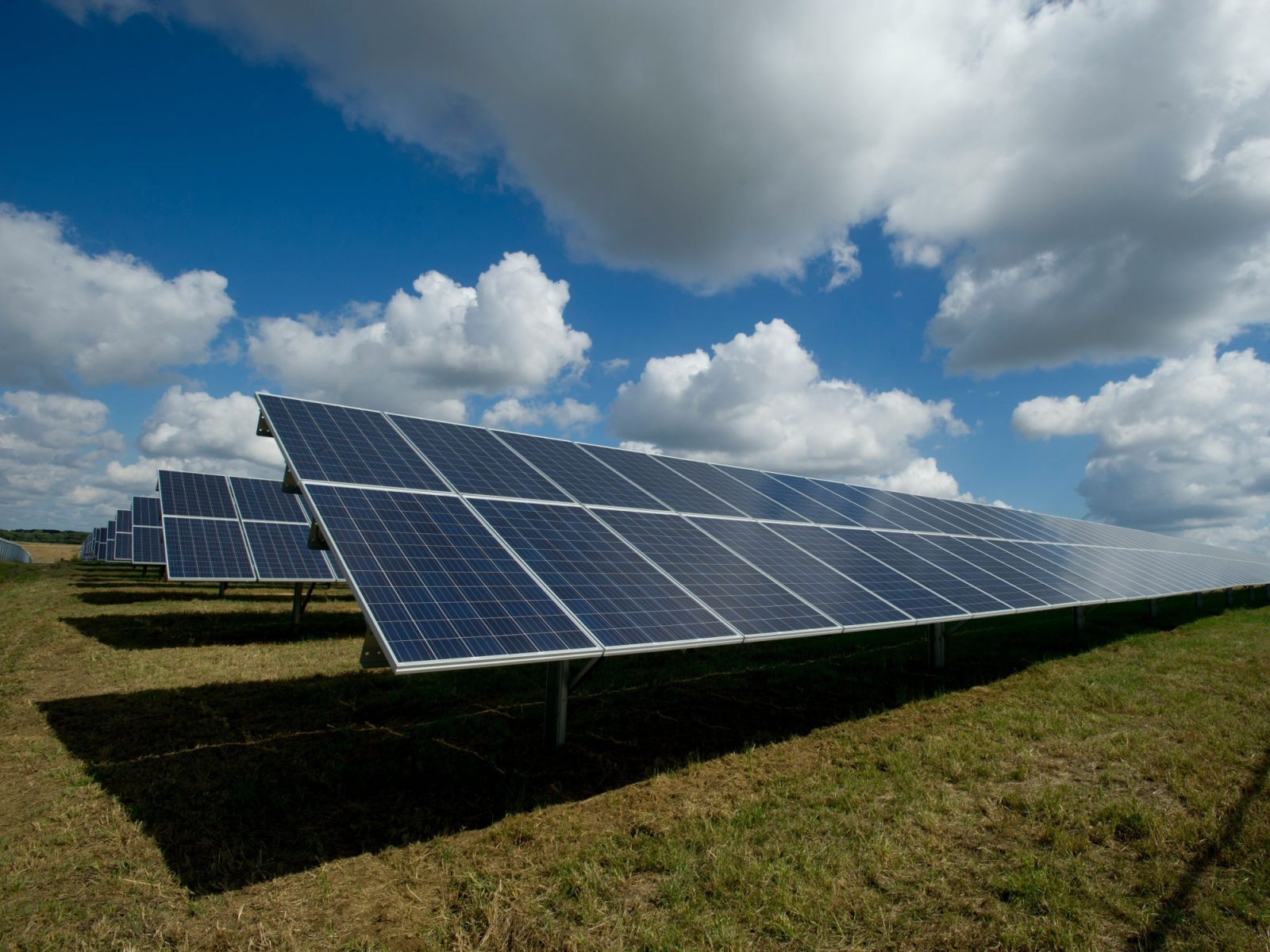Enel Green Power continues its drive toward an increasingly renewable mix within the Enel Group, one of the world's leading electricity producers. Renewable energy sources now account for 68.6 percent of the group's installed capacity, or nearly two-thirds of the total (34.8 percent hydro, 19.5 percent wind, 13.2 percent solar). The Group remains at the forefront of the energy transition, as also demonstrated by its ambitious goal of achieving an exclusively clean power generation park (so-called Net Zero) as early as 2040, some 10 years ahead of the internationally set deadline. Meanwhile, ahead lies the challenge of tripling global renewables.
Renewable Matter interviewed Salvatore Bernabei, CEO of Enel Green Power and Head of Enel Green Power and Thermal generation, to take stock of the group's new direction and global electrification goals.
Enel’s CEO, Flavio Cattaneo announced a 2024-26 selective investment strategy, centered on core countries. What are ENEL's priorities?
Investments will be selected according to a matrix that considers the relationship between risk and return, differentiating choices according to the technology and geographies involved, and making increasing use of partnerships, to optimize risk management and encourage a more flexible approach. The expected growth in the three-year period 2024 - 2026 is about 14 GW of installed power, which will be achieved through different business models, to be selected according to the context: from ownership models, characterized by asset control, to partnership and stewardship models that, involve sharing risk and investment with third parties. Total capacity will thus increase from 63 GW in 2023 to 73 GW in 2026 in the core countries and we will invest in all technologies, wind, solar, hydro and geo with an increasing contribution in repowering.
In particular, Italy and Spain will be the main recipients of our investments with consolidated capacity increasing from 26 GW to 31 GW. This is because the strategy is to generate more where we have a larger customer base and sell the energy generated. In doing so, the coverage of selling energy to our customers will increase from 65 percent to more than 80 percent in 2026. In Latin America and North America, on the other hand, the logic of generation will be different, following the opportunities offered by PPAs with large customers. This explains the growth in consolidated capacity from 16 GW in 2023 to 19 GW in 2026 in Latin America, and from 10 to 12 GW In North America.
How does the goal of tripling renewables signed at COP28 fit into the strategic plan?
The Group confirms its goal to close all remaining coal-fired plants by 2027 and confirms its ambition to achieve zero emissions in all Scopes by 2040.
12.1 billion euros have been allocated as investments on onshore wind, solar, and battery storage. How will you allocate them by geographic area?
The Group confirms that it intends to focus its investments on six core countries, Italy and Spain – as mentioned above – and then Brazil, Chile, Colombia and the U.S. Geographically, these 12,1 billion euro will be allocated as follows: In Europe, the Group expects to allocate about €7.2 billion in gross investment, with renewable generation supported by a large customer base, thanks to which the Group will be able to hedge production and stabilize returns; In Latin America, the Group expects to allocate about €2.6 billion in gross investment; In North America, the Group expects to allocate about €2.3 billion, applying a flexible approach that leverages renewable development supported by PPAs and other opportunities offered by the market.
How heavy is the IRA for investment in the U.S.?
The IRA weighs heavily in these investments. The certainty of a 10-year horizon for production and the investment tax credits offered by the Inflation Reduction Act are a signal to investors and developers that there is a stable and consistent environment for the development of renewable energy and battery energy storage in the United States.
ENEL in the past years has worked a lot on circular innovation, digital systems, AI: what are the main strands of investment in renewable energy technology innovation for the next 3 years?
Renewable energy technology innovation will be focused on several strategic priorities. One of these is alternative technologies to lithium batteries, which do not have criticality in the supply chain and are able to offer long-lasting storage. For example, we are focusing on flow batteries (today vanadium, tomorrow with iron or organic materials), zinc- or iron-based batteries, and non-electrochemical technologies, such as gas compression technologies. New technologies and business models will then be developed to support the development of photovoltaics integrated with agricultural activities, the so-called Agri-Voltaic model, where power generation synergizes with local communities and enables support for biodiversity protection and improved ecosystem services. A concrete example is offered to us by the Italian Agri-Voltaico Open Labs initiative, in which we have involved, with an open and collaborative approach, local farms, universities, research centers, startups, and we are promoting training actions for students and young professionals. In addition, in 2024 in Italy we will put into operation the largest Italian agri-voltaic of 170MW.
Then we will work on automation solutions, based on robotics and artificial intelligence. Robotics initiatives aim to automate repetitive, low-value-added tasks, such as mechanical assembly of components or inspection and maintenance operations. Artificial intelligence solutions, on the other hand, serve us to make our business processes more effective, for example by automatically analyzing information from operating plants to derive the most relevant information and support operator decisions. Finally, we will innovate to improve the resilience of our plants in the face of climate change. On this front, starting with the resource that is most at risk today, water, we have developed solutions to optimize the efficiency of our run-of-river hydropower plants, and we are applying solutions to monitor the water level in our canals to increase our ability to convert all the water resource that arrives at our plants into electricity.
What growth forecast do you foresee for PPAs in the coming years? How central do they serve as a lever for the overall growth of renewable energy installations?
The volume of PPAs signed between renewable energy developers and off-takers has been growing steadily in recent years, and they are expected to continue to be one of the main tools in the future, though not the only one, for hedging price risk for both parties, while contributing to reduced emissions from buyers. In Europe, the PPA market will potentially be affected by the auctions that some EU member states are preparing to encourage investment in new renewable assets, the development of PPAs can enrich ENEL's business strategy. In the other markets where we operate, North America and Latin America, we foresee an important role for PPAs by adopting a flexible approach based on levels of adequate profitability and risk mitigation.
What are the priorities, in Italy, from a regulatory and fiscal perspective to further accelerate the deployment of new plants?
Regarding plants powered by renewable sources, we need the simplification of authorization processes, with a reduction in duration and an increase in the success rate of the same. With reference to the first point, various measures are expected that can, together, on the one hand, reduce and make certain the durations of project authorization procedures; on the other hand, measures that can increase the success rate of these procedures are expected. By way of example and not exhaustive, we mention such interventions as (a) the digitization and transparency of the administrative procedure, which would fix the timeframes and responsibilities within which each entity is called upon to express its opinion; (b) the identification of so-called "suitable areas," of the widest possible scope, so as to be able to ensure effective market mechanisms in development activities and efficiency of the related costs. As far as new storage systems are concerned, given also the challenging goals envisaged by the PNIEC (National Integrated Energy and Climate Plan), it would be advisable to expand the cases in which the effective use of simplified authorization procedures is possible, and in parallel to implement suitable mechanisms to cover the costs of investment and to ensure, at least in part, a stable source of revenue.
This article is also available in Italian / Questo articolo è disponibile anche in italiano
Image: American Public Power Association, Unsplash



